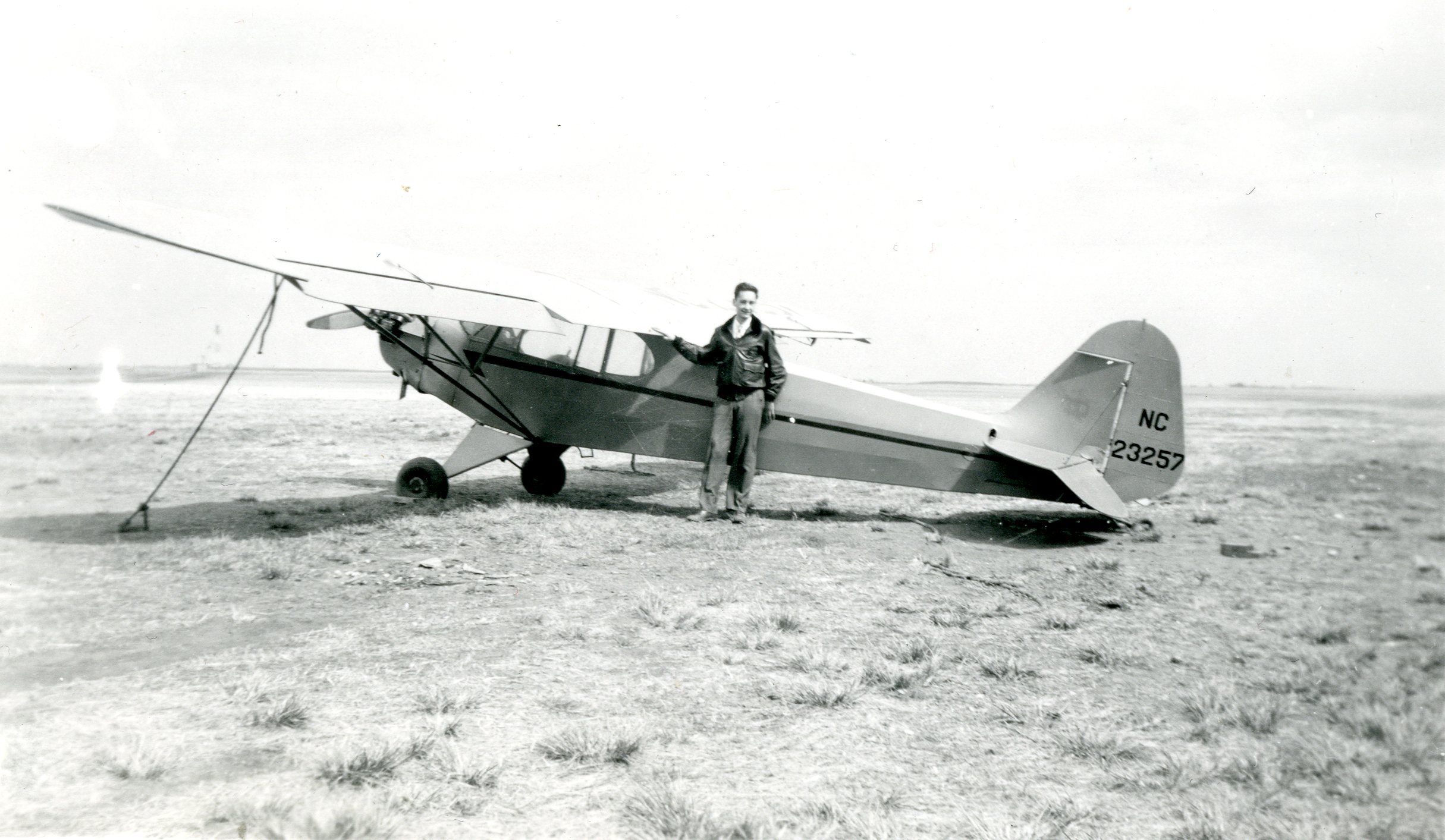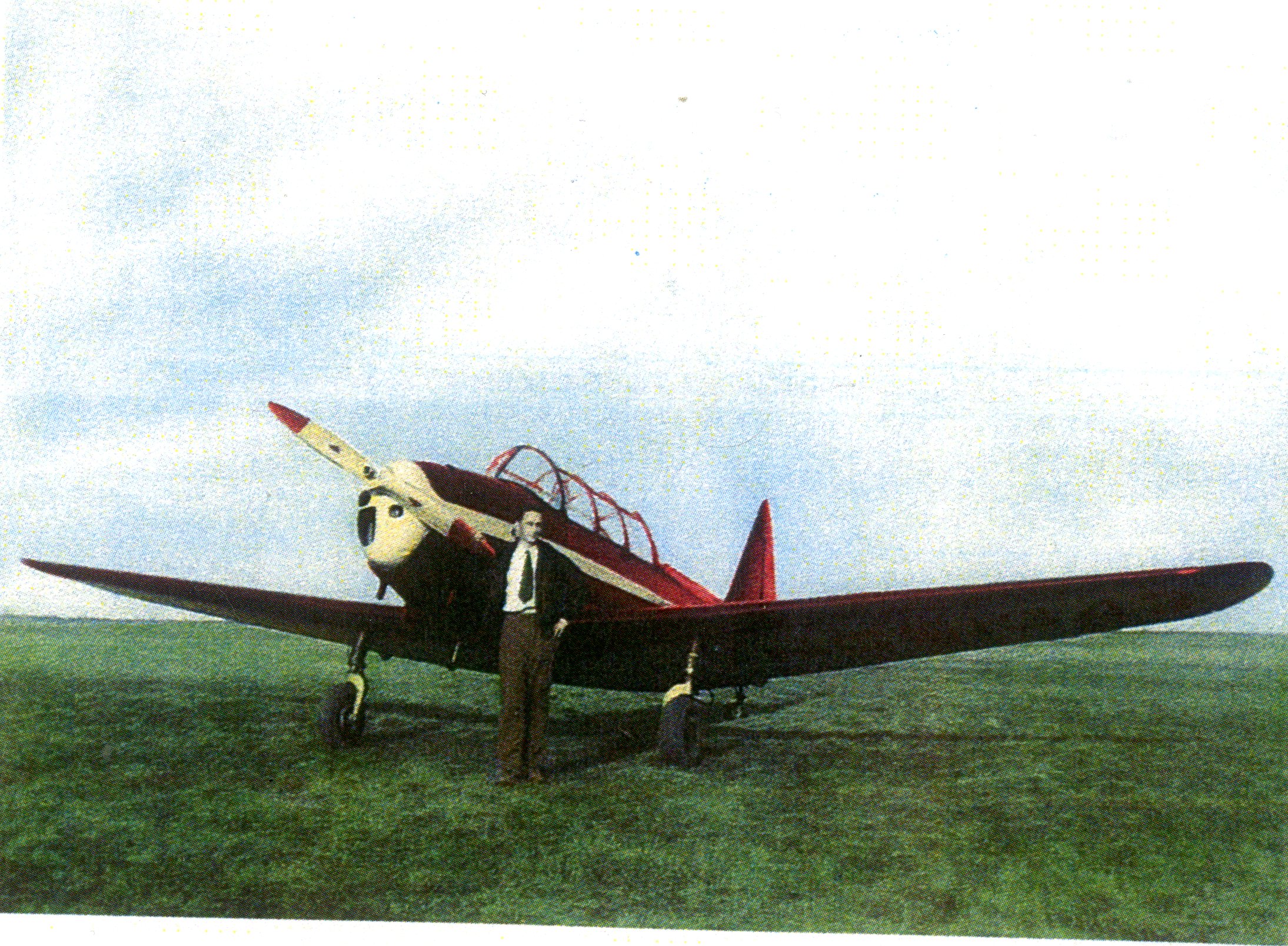By Capt. Bud Kuball (TWA, Ret.)
The Spark that Started It All
Sometime in the mid-1930s, while living in the little town of Adams, N.D.—in the Northeastern part of the state—a barnstorming pilot landed on a nearby field and was giving short rides for $5. My dad, who ran a restaurant, bar, pool hall, and barbershop, took me over there and arranged for a flight. I was about six or seven years old at the time.
The plane used was an old open-cockpit biplane, probably a Waco, with the pilot sitting in the back seat and room for two passengers, sitting side-by-side, in the front cockpit. That was a thrilling experience for me and resulted in my taking flying lessons a few years later when in high school at Jamestown, N.D., where we had moved to.

The author at 16 standing beside his 1939 model Piper Cub
Lessons, in a 65-horsepower Piper Cub, were $9/hour or S4.50 for a half hour. By working in a grocery store after school I was able to save enough money to take a lesson every week. When it was time for college in 1947 I had my Commercial Pilot's License and was enrolled at the University of Colorado under the Naval Aviation College Program. That first flight was the spark that started it all.

Standing beside a WWII PT-19 surplus aircraft

